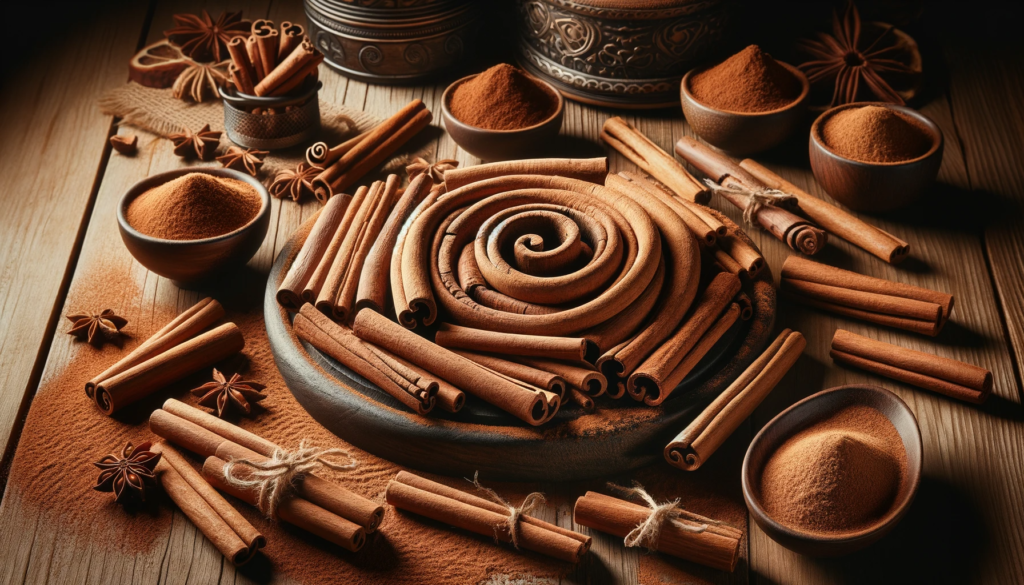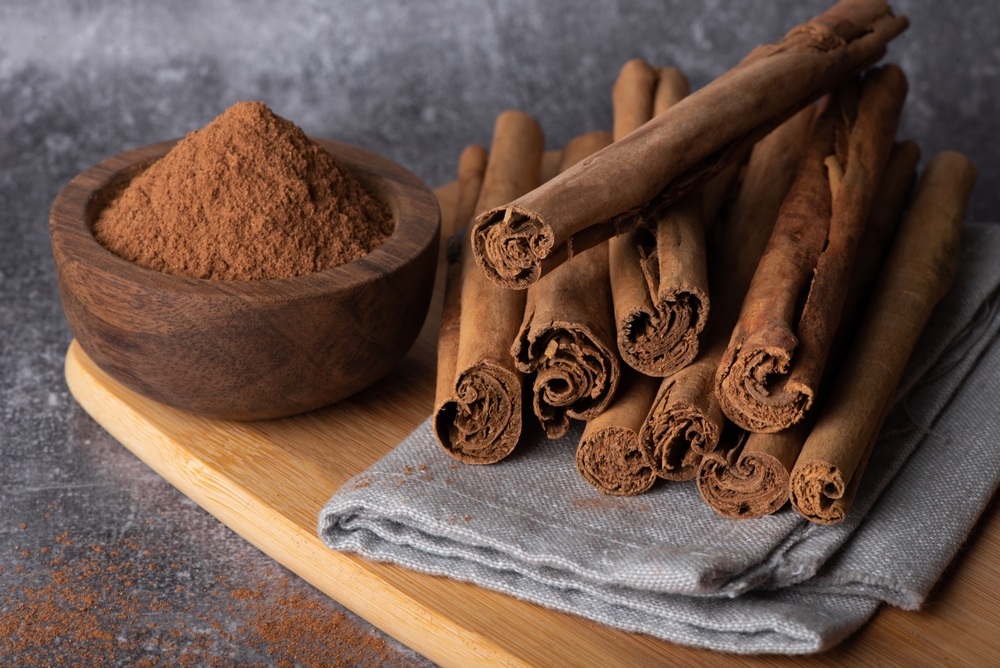The Unique Flavor Profile of Cinnamon
Cinnamon, renowned for its sweet and warm flavor, is a quintessential spice in North African cuisine. This beloved spice is derived from the inner bark of trees from the genus Cinnamomum, offering a distinct aroma that is simultaneously sweet and spicy. In North African dishes, cinnamon is celebrated for its ability to enhance the flavor and aroma of various recipes, from savory tagines to sweet pastries, making it a versatile and essential ingredient in the region’s culinary repertoire.
Cinnamon’s Journey to North Africa: A Historical Overview
Cinnamon’s journey to North Africa is as rich and complex as the spice itself. Originally native to Sri Lanka and India, cinnamon was brought to North Africa through ancient trade routes. Over time, it became deeply embedded in the region’s culinary traditions, used in an array of dishes and known for its distinctive flavor and potential health benefits. Its presence in North African cuisine reflects a blend of cultural influences and historical connections, making cinnamon a symbol of the region’s rich culinary heritage.
Cinnamon in North African Culinary Traditions
Cinnamon in North African Tagines: A Harmony of Flavors
Cinnamon is a star ingredient in the iconic North African tagine. In these slow-cooked stews, cinnamon is not just a spice but a key element that harmonizes with meats, fruits, and vegetables, creating a depth of flavor that is both rich and subtly sweet. Its warm, comforting aroma complements the complexity of spices typically used in tagines, such as cumin, ginger, and saffron. The addition of cinnamon in these dishes showcases its ability to bridge the gap between sweet and savory, making each bite of a tagine a delightful exploration of North African flavors.
Sweet Delights: Cinnamon’s Role in North African Desserts
Cinnamon often takes center stage in North African desserts, particularly in dishes like baklava, couscous-based sweets, and various pastries. Its sweet, woody flavor complements the rich, nutty, and fruity components commonly found in these desserts. Cinnamon is also a popular addition to sweet beverages and teas, where it imparts a comforting warmth and aroma. Its versatility in sweet dishes is a testament to cinnamon’s integral role in North African dessert cuisine, where it is used to create layers of flavor that are both complex and inviting.

Cooking with Cinnamon: Tips and Techniques
Selecting and Storing Cinnamon for Maximum Flavor
Selecting the right type of cinnamon and storing it properly are crucial for maximizing its flavor. There are two main types: Ceylon cinnamon, known as ‘true cinnamon,’ with a delicate, sweet flavor, and Cassia cinnamon, which is more commonly available and has a stronger, spicier profile. For the freshest taste, choose whole cinnamon sticks over ground cinnamon, as they retain their flavor longer. Store cinnamon in a cool, dark place in an airtight container to preserve its essential oils and aroma. When stored properly, whole sticks can last up to a year, while ground cinnamon should be used within six months for the best flavor.
Creative Ways to Use Cinnamon in Everyday Cooking
Cinnamon’s versatility makes it a wonderful spice to experiment with in everyday cooking. It can be used to add warmth and sweetness to breakfast dishes like oatmeal or pancakes. In savory cooking, cinnamon adds a unique twist to meat rubs, soups, and vegetable dishes, especially when paired with other spices like cumin and coriander. For a simple yet impactful use, add a cinnamon stick to your pot when cooking grains like rice or quinoa. Cinnamon also shines in baking, where it can be used in a variety of cakes, cookies, and breads, bringing a comforting and familiar flavor that elevates any baked good.
Regional Dishes: Cinnamon’s Versatility Across North Africa

Cinnamon in Moroccan Cuisine
In Moroccan cuisine, cinnamon is a pivotal spice, used both in iconic savory dishes and sweet treats. It’s a key ingredient in the famous Moroccan spice blend Ras el Hanout, where it adds a sweet and warm note. Cinnamon is commonly used in traditional Moroccan tagines, pairing beautifully with meats like lamb and chicken, as well as in couscous dishes. In sweets, it’s often found in pastries like bastilla and various types of Moroccan cookies and cakes, where its sweet and aromatic flavor complements the use of almonds, honey, and fruits.
Cinnamon’s Influence in Tunisian and Algerian Dishes
In Tunisian and Algerian cuisine, cinnamon plays a significant role in both savory and sweet dishes. In savory recipes, it’s often used to spice up stews and meat dishes, creating a perfect balance of flavors. Cinnamon is also a staple in the preparation of couscous, where it adds a subtle sweetness and warmth. In desserts, it’s frequently used in combination with other spices like cloves and nutmeg, especially in traditional sweets like makroudh, a date-filled pastry. Its versatile nature makes it an indispensable part of Tunisian and Algerian culinary traditions.

Exploring New Horizons: Innovative Cinnamon Recipes
Traditional Recipes Reimagined with Cinnamon
Transform traditional North African recipes with a touch of cinnamon. One classic to experiment with is a Cinnamon-Infused Chicken Tagine, where the cinnamon adds a sweet and aromatic depth to the dish. For a vegetarian option, try a Cinnamon-Spiced Vegetable Couscous, a dish that brings out the natural sweetness of vegetables. For dessert, reinvent the traditional baklava by adding cinnamon, creating a delectable treat that balances the sweetness of honey and nuts with the warm spice of cinnamon. These reimagined recipes showcase the adaptability of cinnamon in enhancing traditional flavors with a contemporary twist.
Modern Takes on Cinnamon-Infused North African Dishes
Embrace modern culinary trends by incorporating cinnamon into contemporary North African dishes. Create a Cinnamon-Spiced Carrot Soup for a warming and flavorful starter. For a main course, consider a Cinnamon and Orange Glazed Chicken, combining the citrusy sweetness of orange with the warm notes of cinnamon. As a sweet finale, a Cinnamon Panna Cotta with a Date and Walnut Topping offers a modern twist on traditional flavors, merging Italian and North African culinary styles. These innovative dishes illustrate how cinnamon can be used to create modern, sophisticated flavors while maintaining its traditional essence.
Cinnamon in North African Cuisine: FAQs
1. What Dishes is Cinnamon Commonly Used In?
Cinnamon is commonly used in a variety of North African dishes, including tagines, couscous, stews, pastries, and sweet teas. Its versatility makes it suitable for both sweet and savory recipes.
2. Can Cinnamon Be Used in Savory Dishes?
Absolutely. In savory dishes, cinnamon adds a unique warmth and depth of flavor. It pairs well with meats, stews, and vegetable dishes, enhancing their natural flavors.
3. How Should Cinnamon Be Stored?
Cinnamon should be stored in a cool, dark place in an airtight container. Whole cinnamon sticks retain their flavor longer than ground cinnamon, but both should be used within six months to a year for optimal freshness.
4. What Are the Health Benefits of Cinnamon?
Cinnamon is known for its potential health benefits, including anti-inflammatory properties, blood sugar regulation, and aiding in digestion. Its antioxidant capabilities also make it a beneficial addition to a health-conscious diet.
5. Can Cinnamon Be Used in Drinks?
Yes, cinnamon is a popular ingredient in beverages. It’s often used to flavor coffees, teas, and even cocktails, adding a warm, aromatic quality to drinks.
6. Are There Different Types of Cinnamon?
There are two main types of cinnamon: Ceylon (true cinnamon) and Cassia. Ceylon cinnamon is milder and sweeter, while Cassia is more common and has a stronger, slightly spicier flavor.
7. How Can I Incorporate Cinnamon into My Diet?
Integrating cinnamon into your diet is easy. You can sprinkle it on oatmeal or yogurt, add it to your coffee or tea, use it in baking, or include it in savory dishes like stews and marinades for an extra layer of flavor.
